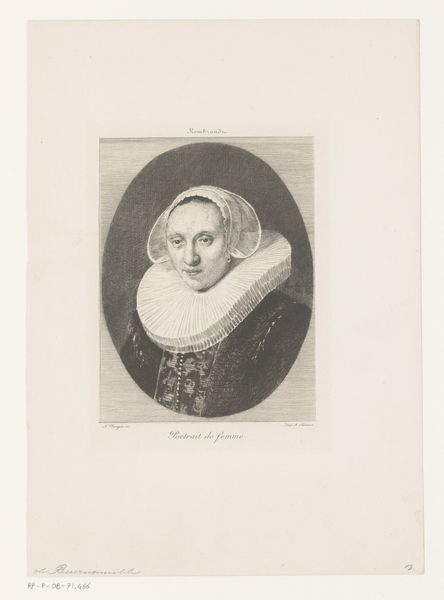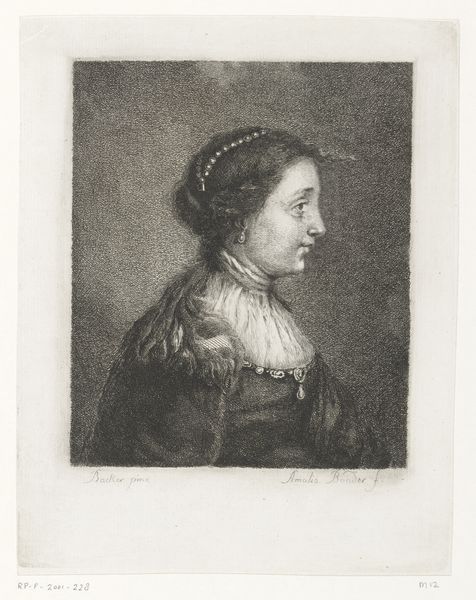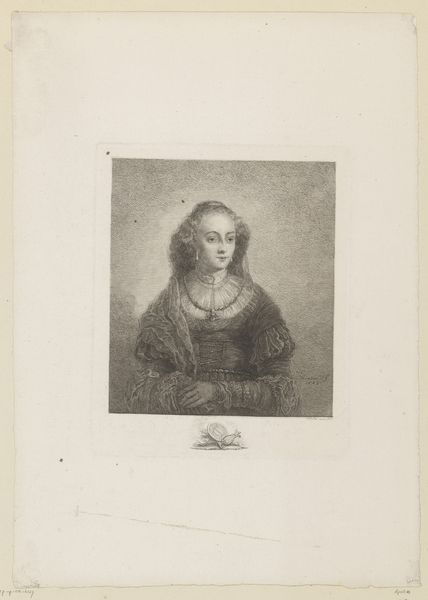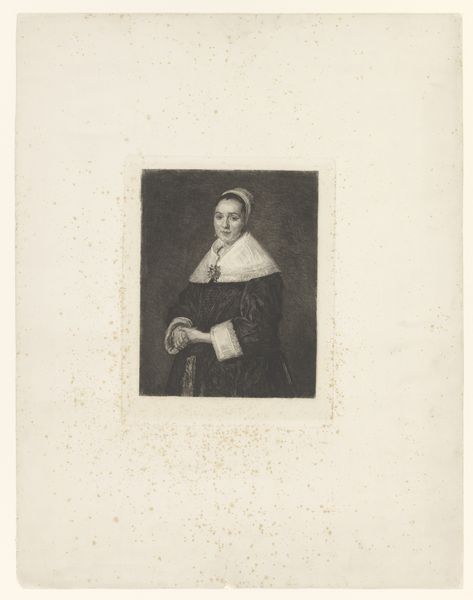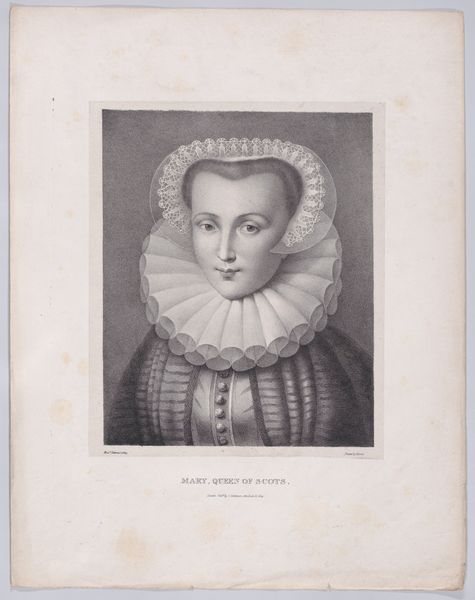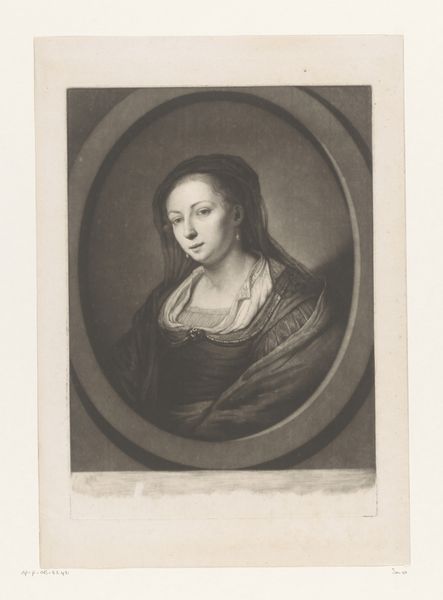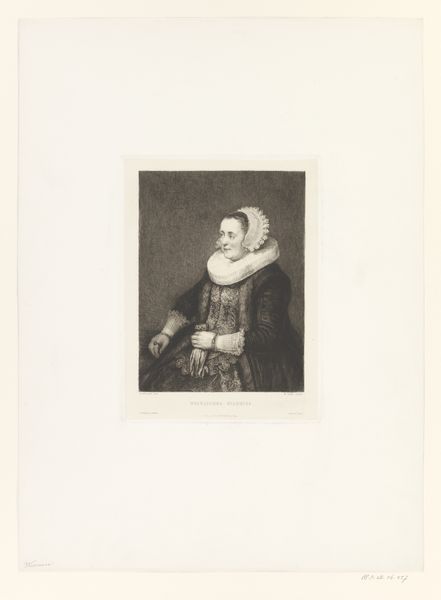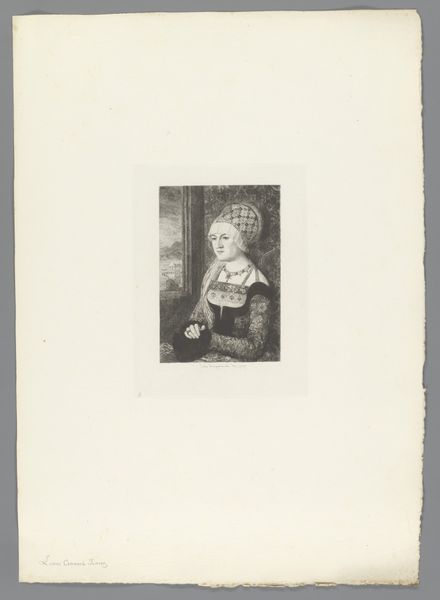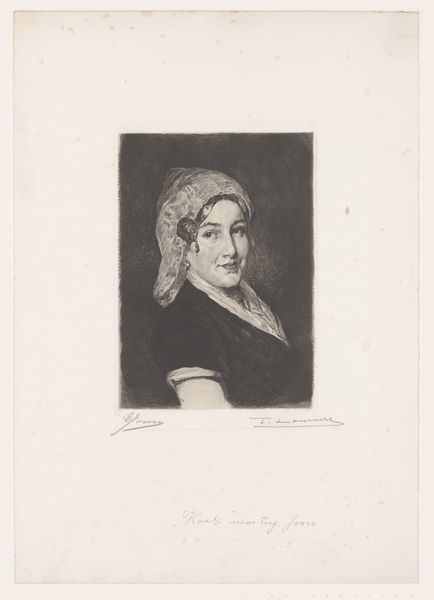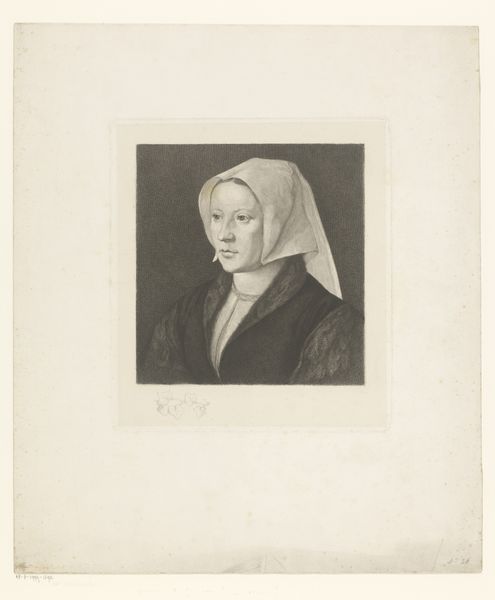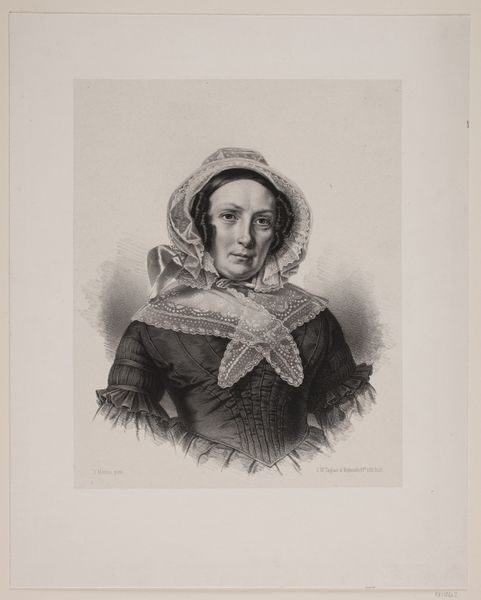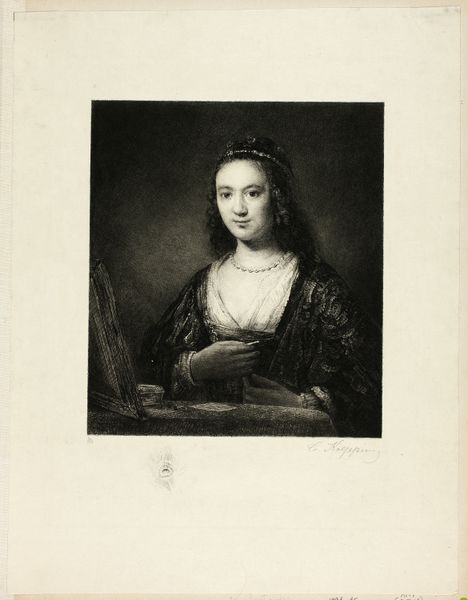
drawing, print, pencil, engraving
#
portrait
#
pencil drawn
#
drawing
# print
#
pencil sketch
#
light coloured
#
11_renaissance
#
pencil drawing
#
pencil
#
engraving
Dimensions: height 253 mm, width 172 mm
Copyright: Rijks Museum: Open Domain
Curator: This is "Portret van een onbekende vrouw met een roos", or "Portrait of an unknown woman with a rose", made between 1847 and 1889. It is by William Unger, made with pencil and engraving. It is currently held here at the Rijksmuseum. Editor: Wow, she looks like she stepped right out of a Jane Austen novel! A very faint one, at that, because that subtle sepia gives her a ghostly ethereal quality. Curator: That's interesting you mention her subtle presence, as portraiture of the period had clear social functions. Displaying status was paramount, and a piece like this reveals details of gender and class through the delicate materials. Editor: Well, there's definitely something very gentle in how she's holding that rose. Almost tentative. And I'm sort of captivated by that frilly ruff around her neck. I’ll bet it itches like mad! Does it speak to wealth? I have so many questions about life in one of these neck contraptions. Curator: Certainly! Ruffs, especially elaborate ones like this, were luxury items, demonstrating the wearer's ability to afford expensive fabrics and the labor to maintain them. Notice, also, the tight control in lines—a technique widely taught in academies across Europe that indicates refinement and discipline. Editor: You know, when you put it that way, her fragility might not just be me projecting. She's performing. Being a delicate woman of stature sounds exhausting, all social pressure and neck-itch. Curator: Indeed. The softness might not only be in the pencils used for the drawing. The light coloring helps accentuate the delicate appearance. Consider that this was likely commissioned or created to project an image of piety and grace, fitting within the expected role of women in that period. Editor: It really gets you thinking about who *didn't* get their portrait done back then, and why. Who’s left out of these carefully constructed historical narratives. Curator: Precisely. Every artwork provides an opportunity to explore social structures and power dynamics inherent in visual representation. What might otherwise appear simply aesthetic carries heavy political weight. Editor: Okay, now I see it. And that rose isn’t so gently held as firmly grasped! A picture may say a thousand words, but sometimes, I realize I’m reading my own stories into the image until someone helps decode it! Curator: It has been a pleasure.
Comments
No comments
Be the first to comment and join the conversation on the ultimate creative platform.
